Today’s Current Affairs: 15th May 2023 for UPSC IAS exams, State PSC exams, SSC CGL, State SSC, RRB, Railways, Banking Exam & IBPS, etc
Table of Contents
Discovery Of Relics And Artefacts : Satavahana Period
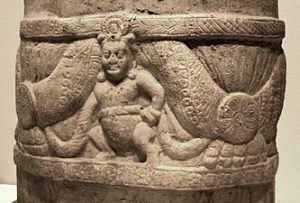
A team of researchers and history enthusiasts recently made a praiseworthy discovery of relics and artefacts which they suggest belong to the Satavahana period from the 1st Century BC to the 3rd Century AD.
- The Satavahanas, also referred to as the Andhrasin the Puranas, were an ancient Indian dynasty based in the Deccan region.
- Most modern scholars believe that the Satavahana rule began in the late second century BCE and lasted until the early third century CE.
- They ruled from Pune in Maharashtra to Coastal Andhra Pradesh. At its greatest extent, the Satavahana empire covered the whole of the Deccan and spread far into Northern India, perhaps even as far as Magadha.
- They played the most significant role in Indian history in the period between the fall of the Mauryas and the rise of the Gupta Empire.
- Satavahana Dynasty was established in the 1st century BC in the western Deccan Plateau.
- Satavahana Rulers had emerged from the Andhra region or the delta areas of the Krishna River and Godavari River.
- The dynasty was built upon the ruins of the Maurya Empire.
- The dynasty had different capital cities at different times, including Pratishthana (Paithan) and Amaravati (Dharanikota).
- The Satavahana polity was extensively decentralized, as local administration was left largely to feudatories subject to the general control of royal officials.
- The king was at the apex of the administrative hierarchy and was considered the guardian of the established social order.
- Though the royal power was absolute, it was subject to religious dictates & public opinion.
- The king had to rule in accordance with the rules laid down in the Dharmashastras.
NOTA : Karnataka Assembly Polls

According to the Election Commission (EC) figures, over 2.6 lakh voters opted for NOTA in the recently held Karnataka assembly polls.
- NOTA (None of the Above) is a ballot option provided in the elections to the Indian voter.
- It is the option which enables the voter to officially register a vote of rejection for all candidates who are contesting.
- If a voter chooses to press NOTA, it indicates that the voter has not chosen to vote for any of the parties.
- Objective is to enable electors who do not wish to vote for any of the candidates to exercise their right to reject without violation of the secrecy of their decision.
- NOTA was used for the first time in the 2013 Assembly elections in five states – Chhattisgarh, Mizoram, Rajasthan, Delhi, and Madhya Pradesh – and later in the 2014 General Elections.
- It was introduced into the electoral process following the 2013 Supreme Court directive in the PUCL versus Union of India case.
- The NOTA option in the Electronic Voting Machines (EVMs) is given at the bottom of the candidates’ list.
- Earlier, in order to cast a negative ballot, a voter had to inform the presiding officer at the polling booth.
- Now the voter has just to press the NOTA option on the EVM.
Storm Shadow Missiles:

Russia’s Defence Ministry recently said that Ukrainian aircraft had struck two industrial sites in the Russian-held city of Luhansk in eastern Ukraine with Storm Shadow missiles supplied by Britain.
- Storm Shadow Missile is a long-range cruise missile with stealth capabilities, jointly developed by the UK and France.
- The missile is intended to strike high-valued stationary assets such as airbases, radar installations, communications hubs and port facilities.
- Able to be operated in extreme conditions, the weapon offers operators a highly flexible, deep-strike capability based on a sophisticated mission planning system.
- The Storm Shadow is also in service with the air forces of Egypt, India, Italy, Greece, Saudi Arabia, Qatar and the United Arab Emirates (UAE).
- It is typically launched from the air.
- It carries a 450kg conventional warhead to a range of up to 200 miles (300km).
- The missile weighs 1.3 tonnes and is just over 5m long.
- It is equipped with fire-and-forget technology and fully autonomous guidance.
- The missile is fitted with a passive imaging infrared seeker.
Model Prisons Act, 2023:
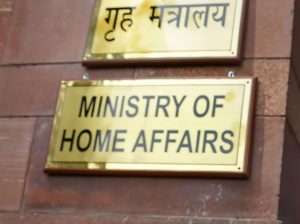
Union Home Ministry recently said that comprehensive ‘Model Prisons Act, 2023’ has been finalized.
- The government had earlier decided to review and revise the colonial-era outdated Prison Act in tune with contemporary modern-day needs and correctional ideology.
- The Model Prison Act, 2023 may serve as a guiding document for the States, and for adoption in their jurisdiction.
- Union Home Ministry had assigned the task of revision of the Prisons Act, 1894 to the Bureau of Police Research and Development.
- The Bureau prepared a draft after holding wide-ranging discussions with State Prison authorities, correctional experts, and others.
- It has been prepared with the objective of holistically providing guidance and addressing the gaps in the existing Prisons Act.
- Some salient features of the new Model Prisons Act include provision for security assessment and segregation of prisoners, and individual sentence planning.
- Grievance redressal, prison development board, attitudinal change towards prisoners, provision of separate accommodation for women prisoners, and transgender are some of the other features.
One Station One Product:
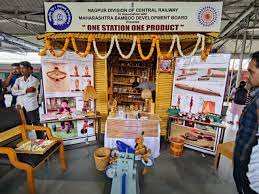
Under the One Station One Product’ (OSOP) scheme of Indian Railways, 728 stations are covered with 785 OSOP outlets in 21 States and 3 Union Territories across the country so far.
- Ministry of Railways launched this scheme in March, 2022.
- The objective is to promote ‘Vocal for Local’ vision of the government, providing a market for local or indigenous products and create additional income opportunities for the marginalized sections of society.
- Under the scheme, OSOP outlets at railway stations are allotted for showcasing, selling and giving high visibility to indigenous or local products.
- These OSOP stalls are designed through National Design Institute for uniformity.
First Ministerial Meeting Of The India-EU Trade And Technology Council:
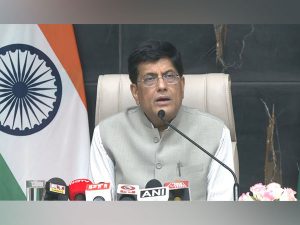
The first Ministerial meeting of the India-EU Trade and Technology Council will be held in Brussels on 16th May.
- The meeting will be co-chaired on the Indian side by the Ministers for External Affairs, Commerce and Industry, and Communications, Electronics, and Information Technology.
- Trade and Technology Council was launched by Prime Minister Narendra Modi and President of European Commission Ursula von der Leyen during Ms Leyen’s visit to India in April last year.
- Both sides established three Working Groups under the Council.
- These are Working Group on Strategic Technologies, Digital Governance, and Digital Connectivity, Working Group on Green and Clean Energy Technologies, and Working Group on Trade, Investment and Resilient Value Chains.
- Meetings of the three Working Groups have also taken place leading to the Ministerial meeting in Brussels.
INS Hansa:

INS Hansa in Goa has become the very first Joint-User International Aerodrome in the South-Asia Pacific region to be augmented with the Required Navigation Performance (RNP) approach.
- This RNP approach will provide near Category-I ILS accuracies, thereby aiding unhindered flying operations even when the aforementioned equipment is unserviceable or under maintenance.
- INS Hansa is an Indian naval air station located near Dabolim in Goa.
- It is India’s biggest naval airbase and is home to the Indian Navy’s premier air squadrons.
- The base has a civil enclave that operates as Dabolim Airport.
- This naval air station has grown to become a full-fledged airfield that handles domestic and international flights around the clock.
Allegator Gar : A Rare Type Of Fish

The Jammu and Kashmir Lake Conservation and Management Authority (LCMA) recently discovered a rare type of fish known as a “Alligator Gar” for the first time in Srinagar’s Dal Lake.
- Allegator Gar is a ray-finned euryhaline fish and is one of the largest of all freshwater fishes.
- Scientific Name: Atractosteus spatula
- It is the largest species in the Gar family.
- The fossil record traces its group’s existence back to the Early Cretaceous over 100 million years ago.
- Gars are often referred to as “primitive fishes”, or “living fossils” because they have retained some morphological characteristics of their early ancestors
- It is distinguished by its crocodile-like head and razor-sharp teeth.
- It can grow up to 8 feet long and weigh more than 300 pounds.
- Adults have two rows of large teeth on either side of the upper jaw.
- Colouration is generally brown or olive above and lighter underneath.
- They can live for many decades.
- Conservation Status:
- IUCN: Least Concerned
Harit Sagar Green Port Guidelines 2023:

The Ministry of Ports, Shipping & Waterways has launched ‘Harit Sagar’ Green Port Guidelines 2023 to achieve the Zero Carbon Emission Goal.
- Sagar Shreshtha Samman awards were also conferred to major ports for their exceptional achievements in various operational parameters.
- Harit Sagar Guidelines 2023 reflects the vision of making India’s ports more environmentally friendly and sustainable.
- They also cover aspects of the National Green Hydrogen Mission pertaining to ports, development of green hydrogen facility, LNG bunkering, and Offshore Wind Energy among others.
- These guidelines also provide the provision for adopting the global Green Reporting Initiative (GRI) standard.
- Objectives:
- To promote the adoption of best practices and technologies for green port development and operations, such as renewable energy, water conservation, biodiversity protection, and climate resilience.
- To minimize waste through Reduce, Reuse, Repurpose and Recycle to attain zero waste discharge from port operations.
- To establish a rating system for assessing and benchmarking the environmental performance of ports based on various indicators and parameters.
- To incentivize and recognize the ports that achieve high standards of environmental excellence and sustainability.
- To facilitate the integration of green port principles into the planning, design, construction, operation, and maintenance of port infrastructure and services.
Target Olympic Podium Scheme:

Olympian and World Championship silver medallist archer Atanu Das has been re-introduced in the Target Olympic Podium Scheme (TOPS).
- Other big names to be included in TOPS are rifle shooter Mehuli Ghosh and 15-year-old Tilottama Sen, who won bronze in 10m air rifle event at International Shooting Sport Federation World Cup 2023 held in Cairo, Egypt.
- A total of 27 new names were inducted in the TOPS Core and Development lists which now takes the total number of TOPS athletes to 270 (101 in Core, 169 in Development).
- Target Olympic Podium Scheme (TOPS) is to improve India’s performance at Olympics and Paralympics, the Ministry of Youth Affairs and Sports (MYAS) started the Target Olympic Podium Scheme (TOPS) in September 2014.
- This was revamped in April 2018 to establish a technical support team for managing the TOPS athletes and providing holistic support.
- The Ministry of Youth Affairs & Sports is responsible for appointment of TOPS members with emphasis on ensuring representation from ‘High-Priority’ sports (Archery, Badminton, Boxing, Hockey, Shooting and Wrestling).
Fomalhaut : NASA

NASA’s James Webb Space Telescope uncovered a complex and fascinating dusty structure around the young star Fomalhaut.
- Fomalhaut is located 25 light-years from Earth
- It was one of the first exoplanets ever discovered in visible light by NASA’s Hubble Space Telescope in 2004.
- Exoplanets are the planets that orbit around stars other than the Sun.
- It is used in navigation because of its conspicuous place in a sky region otherwise lacking in bright stars.
- It is a white star, it has an apparent magnitude of 1.16.
- It lies in the southern constellation Piscis Austrinus, 25 light-years from Earth.
- It is the brightest star in the southern constellation Piscis Austrinus.
- It is surrounded by debris disks that are remnants of collisions between larger bodies, similar to asteroids and comets.
- Astronomers proposed that Fomalhaut b was not a real planet but rather an expanding dust cloud left behind by a collision between two cometlike bodies.
Restrictions On Gay And Bisexual Men From Donating Blood Ended:

The US Food and Drug Administration (FDA) has ended the longstanding restrictions on gay and bisexual men from donating blood.
- The prohibition was first implemented during the HIV/AIDS crisis in the 1980s and has been long decried as discriminatory by the LGBTQI+ community and its supporters.
- New guidelines is
- Donors have to answer a questionnaire and they will be screened based on their recent sexual activity rather than their sexual orientation or sex.
- Have done away with the three-month deferral period for monogamous MSM, but it stays in place for those who have had new or multiple partners in the past three months.
- The new changes have been introduced to boost blood donations across the US and address the discriminatory nature of the existing policy.
- In India Transgenders, gay people, and female sex workers aren’t allowed to donate blood.
- This is according to clauses 12 and 51 of the ‘Guidelines for Blood Donor Selection & Blood Donor Referral, 2017’ issued by the National Blood Transfusion Council (NBTC) and the National Aids Control Organisation on October 11, 2017.
Soaring Eagle Exercise : South Korea Air Force
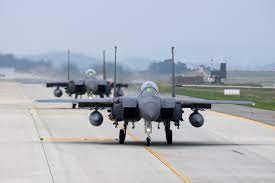
The South Korea Air Force recently commenced the Soaring Eagle exercise, a large-scale training program aimed at enhancing its combat capabilities and ensuring the country’s defense posture.
- The exercise comes amidst heightened tensions on the Korean Peninsula following North Korea’s firing of a purported solid-fuel intercontinental ballistic missile.
- The Soaring Eagle exercise began at the Cheongju air base, situated 112 kilometers south of Seoul.
- Over 160 personnel and nearly 60 warplanes, including F-35A stealth fighters, F-15Ks, KF-16s, and KC-330 tanker transport aircraft, were mobilized for the exercise.
- The Soaring Eagle exercise plays a vital role in equipping the South Korea Air Force with swift response capabilities against increasing enemy provocations and threats.
- It allows the Air Force to verify its strike capabilities against various threat targets, ensuring optimal operational readiness.
100 Days 100 Pays Campaign : RBI

The Reserve Bank of India (RBI) recently announced the launch of the ‘100 Days 100 Pays’ campaign on June 1. This campaign aims to trace and settle the top 100 unclaimed deposits in every bank across all districts within a span of 100 days.
- 100 Days 100 Pays’ campaign is to proactively address the issue of unclaimed deposits held by banks.
- The campaign specifically targets the top 100 unclaimed deposits in each bank within every district, aiming for a comprehensive and widespread settlement. By focusing on these deposits, the RBI aims to ensure that the rightful owners or claimants receive their long-overdue funds.
- As per the RBI’s available data until February, Public Sector Banks had transferred a substantial amount of ₹35,012 crore as unclaimed deposits to the RBI.
- This staggering amount underscores the significance of addressing the issue promptly and effectively.
Govind Swarup Lifetime Achievement Award:
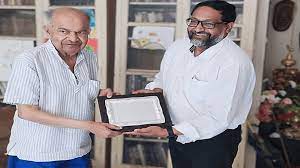
The Astronomical Society of India (ASI) has recently instituted the prestigious Govind Swarup Lifetime Achievement Award to honor remarkable individuals in the field of astronomy.
- The award was conferred to the renowned astronomer, Jayant Naralikar.
- Jayant Naralikar, a distinguished figure in Indian astronomy, was the recipient of the inaugural Govind Swarup Lifetime Achievement Award.
- The Govind Swarup Lifetime Achievement Award, established by the ASI, aims to acknowledge individuals who have made exceptional contributions to the field of astronomy throughout their careers.
- This coveted award serves as a testament to the honorees’ dedication, innovation, and immense impact on the scientific community.
- The Govind Swarup Lifetime Achievement Award is named in honor of the late Prof. Govind Swarup, who is widely regarded as the pioneer of radio astronomy in India.
- Swarup, the founding director of the National Centre for Radio Astrophysics (NCRA), led groundbreaking projects such as the Ooty Radio Telescope (ORT) and the Giant Metrewave Radio Telescope (GMRT).




